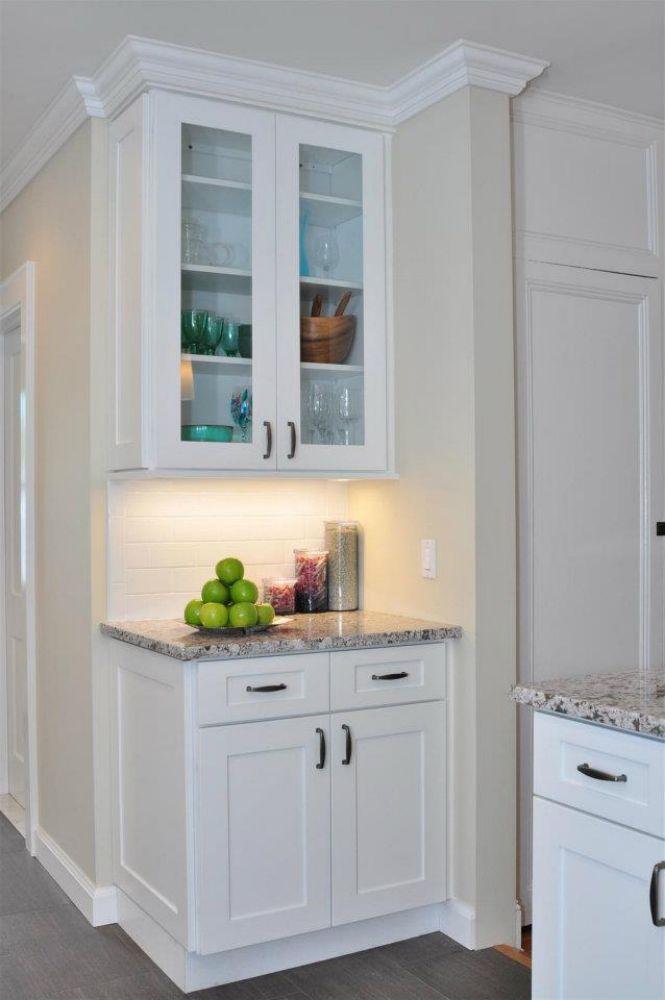Introduction to Forevermark Signature Pearl Cabinets
Forevermark Signature Pearl cabinets are one of the most recognizable and stylish options in the Forevermark product line. Featuring a raised panel door style with an off-white finish, these cabinets are designed to bring both elegance and durability into the kitchen. When planning a kitchen remodel, many homeowners wonder whether base cabinets are mounted the same way as wall cabinets. Understanding the differences in installation is essential, as base cabinets serve as the foundation of your kitchen layout, while wall cabinets provide overhead storage.
This article explores how Forevermark Signature Pearl base cabinets and wall cabinets differ in mounting methods, the tools required for each, and important considerations to ensure a successful installation.
The Role of Base Cabinets in a Kitchen
Base cabinets form the foundation of most kitchen layouts. They:
-
Support countertops, sinks, and appliances.
-
Provide essential storage space for pots, pans, and kitchenware.
-
Establish the footprint of the kitchen design.
-
Anchor islands or peninsulas.
Because base cabinets bear significant weight, their installation differs from that of wall cabinets. Proper alignment, leveling, and securing are crucial for long-term functionality.
The Role of Wall Cabinets in a Kitchen
Wall cabinets, by contrast, are mounted above base cabinets and play a different role. They:
-
Maximize vertical storage.
-
Store lighter items like dishes, glasses, or dry goods.
-
Contribute to the kitchen’s visual design by drawing the eye upward.
While wall cabinets don’t carry the weight of countertops, they must be securely fastened to wall studs to support the load of dishes and other stored items.
Key Differences Between Base and Wall Cabinet Installation
Base and wall cabinets differ in several important ways when it comes to mounting:
-
Weight Distribution – Base cabinets support heavy loads like countertops and sinks, while wall cabinets support lighter but still significant storage.
-
Mounting Method – Base cabinets are anchored to the floor and wall for stability, while wall cabinets are hung on studs using screws and support rails.
-
Alignment Needs – Base cabinets must be perfectly level to ensure countertops fit properly. Wall cabinets require leveling along the top edge to align with each other.
-
Tools and Hardware – Installation hardware may vary between the two, with wall cabinets relying heavily on wall stud anchors, while base cabinets require floor shims and brackets.
How Forevermark Signature Pearl Base Cabinets Are Mounted
Forevermark Signature Pearl base cabinets follow standard cabinet installation practices:
-
Marking Layouts – Installers mark the kitchen layout, starting with a reference line for cabinet positioning.
-
Leveling Floors and Walls – Shims are used to adjust uneven floors or walls.
-
Positioning Cabinets – Base cabinets are placed in position, starting at corners or against walls.
-
Securing to Wall Studs – Screws are driven through the back of the cabinet into wall studs for stability.
-
Securing to Each Other – Adjacent cabinets are clamped together, drilled, and fastened to ensure a seamless look.
-
Countertop Preparation – Once base cabinets are installed and level, they are ready to support countertops.
How Forevermark Signature Pearl Wall Cabinets Are Mounted
The installation of wall cabinets differs in these ways:
-
Finding Wall Studs – Wall cabinets must be anchored into studs to bear weight.
-
Support Rails or Ledges – Installers often use a temporary ledger board or support rail to hold cabinets in place during mounting.
-
Securing to Studs – Cabinets are screwed directly into studs with long, heavy-duty screws.
-
Joining Cabinets Together – Like base cabinets, wall cabinets are aligned and fastened side by side.
-
Final Adjustments – Doors and hinges are adjusted to ensure uniform alignment after mounting.
Tools and Hardware Required
Both base and wall cabinets require similar tools, but some are specific to each type:
-
Common Tools: Drill, level, tape measure, clamps, and stud finder.
-
For Base Cabinets: Shims, floor brackets, and screws.
-
For Wall Cabinets: Ledger board, longer mounting screws, and stud anchors.
Using the right hardware ensures the cabinets remain secure and functional for years.
Importance of Proper Leveling
One of the most critical aspects of both base and wall cabinet installation is proper leveling. For base cabinets, uneven installation can lead to countertops that don’t fit properly, gaps between cabinets, or stress on seams. For wall cabinets, poor leveling can create uneven gaps between doors, making the kitchen look unprofessional.
Forevermark Signature Pearl cabinets, with their polished finish and raised panel design, highlight imperfections more than simpler cabinet styles, making precise leveling even more important.
Professional vs. DIY Installation
Many homeowners consider DIY installation of Forevermark Signature Pearl cabinets to save costs. While this is possible, especially with ready-to-assemble (RTA) options, professional installation offers several advantages:
-
Proper tools and expertise.
-
Guaranteed leveling and alignment.
-
Faster completion time.
-
Reduced risk of damaging cabinets during installation.
However, skilled DIYers can install these cabinets successfully by carefully following Forevermark’s installation instructions and double-checking measurements.
Common Mistakes to Avoid
When mounting base and wall cabinets, homeowners should avoid these common mistakes:
-
Skipping Studs – Fastening wall cabinets without hitting studs can lead to failure.
-
Ignoring Floor Level – Installing base cabinets on uneven floors without shims will result in misalignment.
-
Not Clamping Cabinets Together – This can cause gaps between cabinets.
-
Rushing the Process – Precision and patience are key to a professional-looking finish.
Comparing Base and Wall Mounting Side by Side
| Feature | Base Cabinets | Wall Cabinets |
|---|---|---|
| Primary Support | Floor + Wall | Wall Studs |
| Function | Countertop + Storage | Overhead Storage |
| Leveling Importance | Critical for countertops | Critical for alignment |
| Installation Tools Needed | Shims, brackets | Ledger boards, anchors |
| Weight Distribution | Heavy loads (countertops, sinks) | Medium loads (dishes, glasses) |
Conclusion
Forevermark Signature Pearl base cabinets and wall cabinets are both designed for durability and style, but they are not mounted the same way. Base cabinets are anchored to the floor and wall, designed to bear the heavy loads of countertops and appliances, while wall cabinets are suspended and secured directly into wall studs. Understanding these differences ensures a smoother installation process and long-lasting results. Whether choosing professional installation or a DIY approach, attention to leveling, hardware, and proper securing methods will guarantee that your kitchen remains both functional and beautiful.
Frequently Asked Questions
Q1: Can I install Forevermark base and wall cabinets by myself?
A1: Yes, with the right tools and preparation, DIY installation is possible, though professional installation is often recommended for best results.
Q2: Do I need special hardware to mount Forevermark cabinets?
A2: Both base and wall cabinets come with standard installation requirements, but wall cabinets need longer screws and anchors for stud mounting.
Q3: How do I ensure my cabinets are level?
A3: Use a high-quality level and shims for base cabinets, and a ledger board for wall cabinets during installation.
Q4: Can base cabinets be installed without attaching them to the wall?
A4: No, securing base cabinets to the wall is necessary to prevent shifting and to properly support countertops.
Q5: Do Forevermark Signature Pearl cabinets come with installation instructions?
A5: Yes, Forevermark provides detailed installation guidelines, especially for ready-to-assemble models, to assist both professionals and DIYers.

